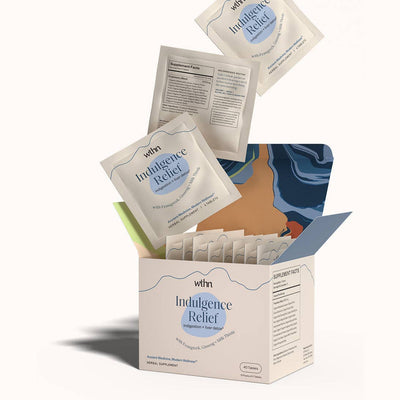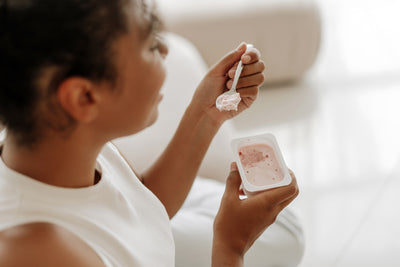Americans love cheese. In 2019, the average person in the United States ate about 40 pounds of cheese, according to Statistica. That’s like eating a kindergartener's worth of cheese. Besides the sheer weight seeming on the unhealthy side, cheese isn’t always the best option. Depending on the type of cheese, it can be very high in sodium, saturated fat, and terrible for you if you are lactose intolerant. Don’t fret, there are many healthy cheese alternatives. So you can continue to eat your kindergartener size cheese wheel without worrying about your health.
Lower sodium options
You might love a Kraft single or feel a brick of Velveeta is essential to making creamy mac and cheese. But, darling, it is so bad for you. Processed cheeses like sliced American cheese (and whatever Velveeta is) is really high in sodium — containing up to 400 mg of sodium per ounce. That’s because these cheeses are made from natural cheese that is blended with emulsifying salts to preserve the cheese.
Instead of going for processed cheese, eat natural cheeses like Emmental (real Swiss cheese, which has about 20 mg of sodium per ounce) or Monterey Jack (about 150 mg of sodium per ounce). As an alternative for Velveeta in your mac and cheese, go with cream cheese, which has about 103 mg of sodium per ounce.
Low saturated fat options
Cheese is really great because it is a good source of protein and calcium. But it can be high in saturated fat, which can lead to high cholesterol, high blood pressure, and increase your risk of heart disease. Cheeses like brie and goat cheese are very high in saturated fats. Instead, pick up lower fat cheeses like cottage cheese — fat free cottage cheese clearly has no fat, but even regular cottage cheese has about 0.5g of saturated fat per ounce. Also consider splurging on fresh mozzarella, which is lower in fat as well.
Best cheese for lactose intolerance
If you’re lactose intolerant (you probably are, about 65% of the world’s population struggles to digest lactose after infancy), cheese and other dairy products are a problem. But that probably doesn’t stop you from gorging on that school-age child worth of cheese you’ll consume this year. Fortunately, there are a bunch of cheese options for the dairy-challenged.
Soft and creamy cheeses like ricotta, brie, Camembert, cottage cheese, and cream cheese are high in lactose, the sugar that’s in milk. If your body isn’t producing enough lactase, the enzyme that breaks down lactose, you should probably avoid those cheeses.
Instead, go for hard, aged cheeses like Swiss, parmesan, and cheddar, which is lower in lactose. Also try cheeses made from goat and sheep’s milk. While goat and sheep milk contains lactose, for some reason, many lactose intolerant people can better tolerate cheeses from those animals than cow’s milk cheese. If you must have cow’s milk cheese, consider fresh milk cheese — raw or unpasteurized cheese. Unpasteurized cheese has very little lactose. When it is fermented it contains no lactose at all.
Tips for buying cheese
The wonderful thing about cheese is that there are so many different types that you can have really amazing, healthy snacks every day. Consider these tips the next time you’re in the dairy case of the grocery store checking out cheese.
-
Don’t buy shredded cheese. Who doesn’t love a cheese egg? But it can be a hassle pulling out that grater every morning. However, block cheese is infinitely better than pre-shredded cheese. Pre-shredded cheese contains preservatives that makes it harder to melt and doesn’t taste as good because it’s not as fresh. Plus, grated cheese costs more.
-
Store your cheese in paper not plastic. Cheese is alive! By wrapping the cheese in plastic wrap you’re basically suffocating the cheese to death. Now you’re a murderer. Instead wrap your cheese wax paper or cheese paper and store it loosely in a plastic bag.
-
Don’t buy too much cheese. It is tempting to buy seven blocks of cheese when there is a sale. But cheese starts to deteriorate after it’s cut into. You’ll only have a few good days left after you cut it. So buy only what you plan to eat immediately.
- Don’t freeze your cheese. Cheese contains a lot of water. Freezing it causes ice crystals to form, which can mess with the protein structure of the cheese and ruin its texture. This is especially true for soft cheeses.








Leave a comment